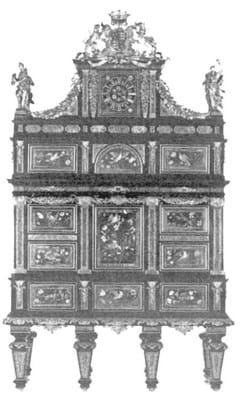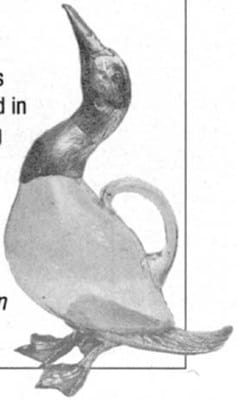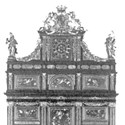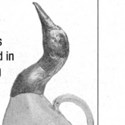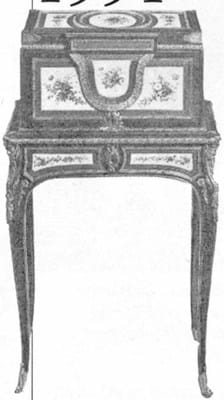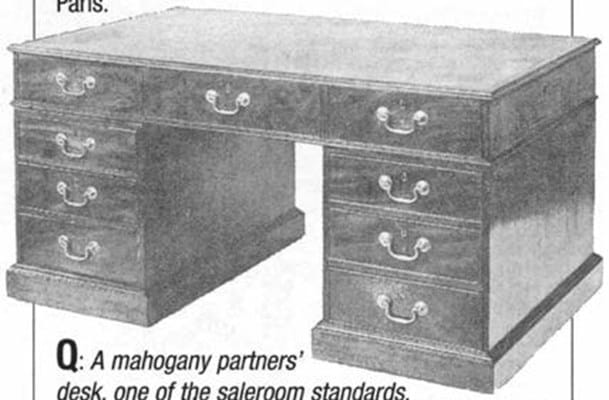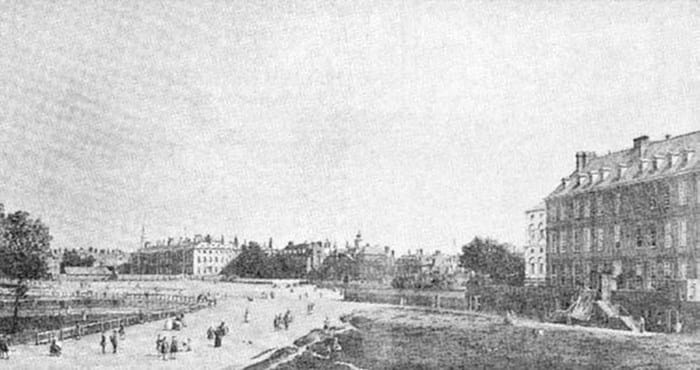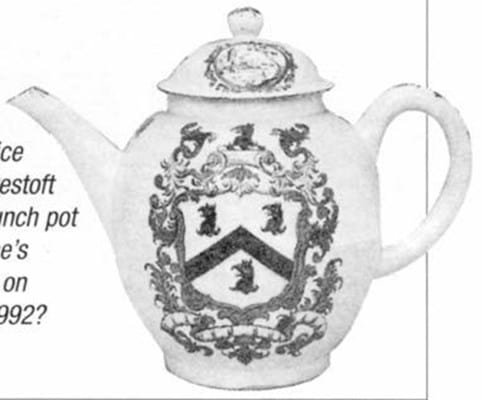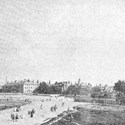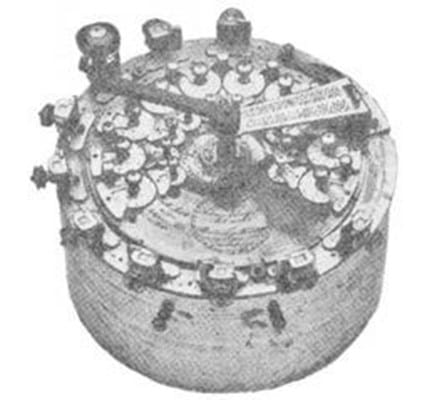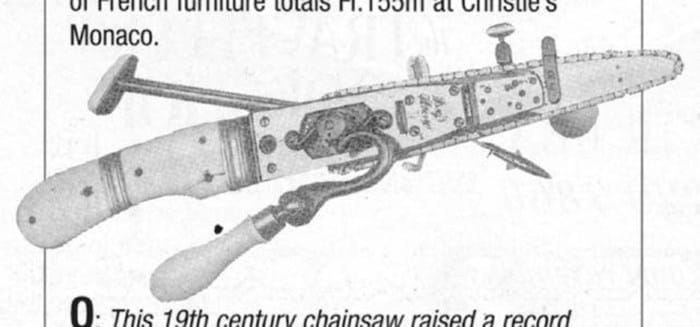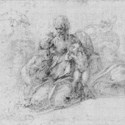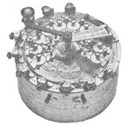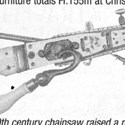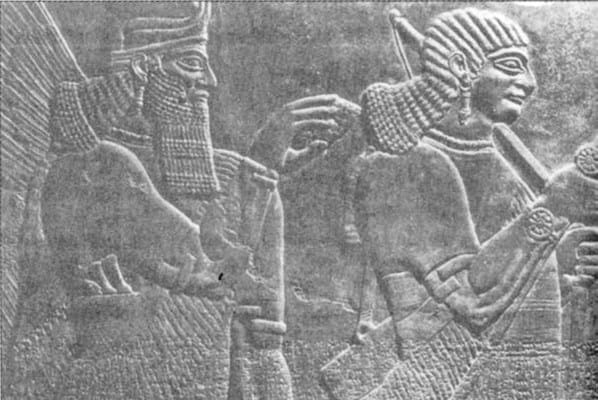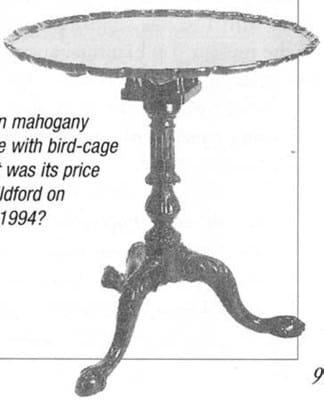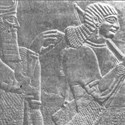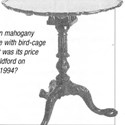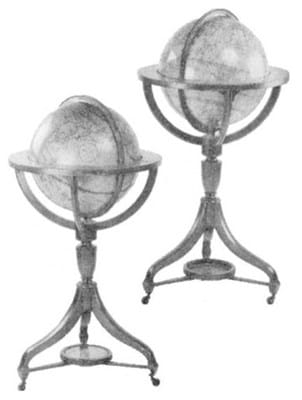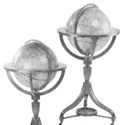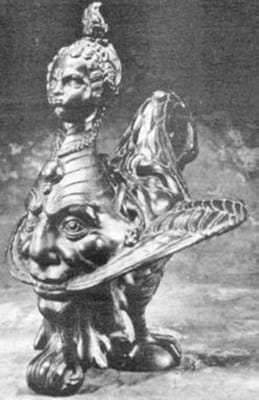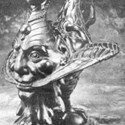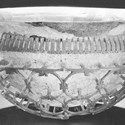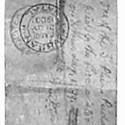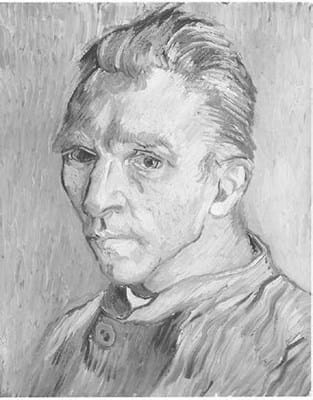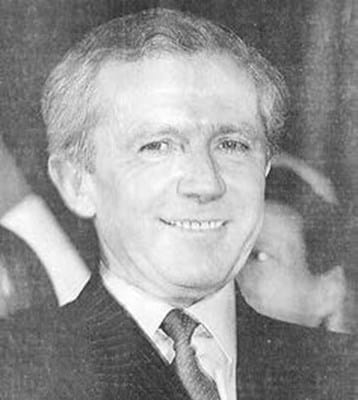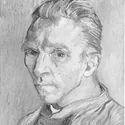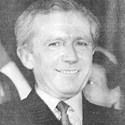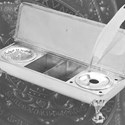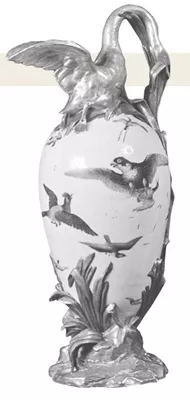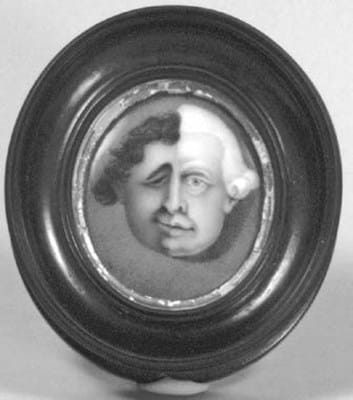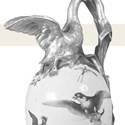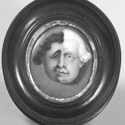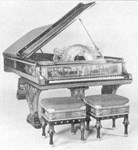1990
■ The Sevso Treasure, a 14-piece hoard of 4th-5th century Roman silver belonging to the Marquess of Northampton’s family trust, surfaces on the market with Lebanese export licences. Sotheby’s attempts to sell it by private treaty for around £40m are thwarted when the Lebanese government lays claim to the silver.
■ When Alan Bond fails to pay up, Sotheby’s sell van Gogh’s Irises by private treaty to the Getty Museum.
■ Christie’s announces pre-tax profits of £70m for 1989 (up 58%), while Sotheby’s are up 88% with $188m (£117m). Art world Cassandras predict that the art market is heading for a slump.
■ The 9th century Gospels looted from Quedlinburg Abbey at the end of the Second World War by an American serviceman are returned after payment of a $3m ‘finder’s fee’ to the soldier’s heirs.
■ Van Gogh’s Portrait of Dr Gachet sells for $75m (£45.7m) at Christie’s New York.
■ Fellows moves to new premises in Birmingham’s Jewellery Quarter.
■ Eskenazi sells the prestigious Charles A Greenfield collection of Japanese lacquer, a European private buyer paying £350,000 for a Rimpa writing box attributed to Honami Koetsu.
■ The painting that gave Impressionism its name, Monet’s Impression, Sunrise, is recovered in Corsica several years after being stolen from the Musée Marmottan, Paris.
Meanwhile elsewhere:
● Nelson Mandela freed.
● Germany reunited.
● Margaret Thatcher resigns.
● First web server created.
● Sterling joins the European Exchange Rate Mechanism.
1991
■ Sotheby’s pre-tax profits are down 17%, Christie’s by 36%, chiefly because of the fall in the Impressionist and Modern markets. Both auction houses respond by making 10% staff cuts.
■ Environment secretary Michael Heseltine rules that Canova’s sculpture The Three Graces is a chattel, not a fixture, and can be removed from Woburn Abbey. The Cayman Islands company which owns the piece had accepted £7.6m from the Getty Museum, but the arts minister blocks the sale.
■ Jacques Koopman, the most prominent post-war silver dealer, creator of the Al-Tajir Collection, dies ages 60.
■ The collection of socialite Daisy Fellowes is sold by Dreweatt Neate at her house, Donnington Grove, for £1.25m. Carlton Hobbs pays £68,000 for a Russian shell-back chair.
■ Old Master dealers Heim Gallery and toy specialist Mint & Boxed go into receivership.
■ A used car dealer, charged with handling the Courtauld Institute’s stolen Pieter Brueghel, describes it as ‘some sort of Mickey Mouse picture’. Christ and the Woman Taken in Adultery, stolen in 1982, was recovered from the top of a gas-fitter’s wardrobe in Peckham.
■ High-profile Parisian auctioneer Jean- Louis Picard splits acrimoniously from Ader Picard Tajan.
■ Sotheby’s Castle Howard ‘attic sale’ nets £2m, with a 17th century Kakiemon figure making £60,000.
■ Former Sotheby’s antiquities department administrator James Hodges goes on trial at Knightsbridge Crown Court, accused of stealing antiquities and defrauding the company.
■ A Kiki Picasso Swatch watch makes Fr140,000 (£14,000) at Chayette & Calmel’s in Paris.
Meanwhile elsewhere:
● First Gulf War ends.
● Collapse of Soviet Union.
● $500m of paintings stolen from Van Gogh Museum, found in a car less than an hour later.
1992
■ European Community proposals for VAT on art imports provoke widespread complaints from the trade which rumble on all year.
■ The market for early 18th century Staffordshire pottery is dented when two men are charged with offloading almost £500,000 of fakes during the mid 1980s. Victims of the fraud include Alistair Sampson and major New York collector Henry Weldon. Those charged are acquitted when the case comes to trial two years later.
■ WE Hill, the stringed instrument specialist in family hands since 1742, goes into liquidation.
■ Christie’s Amsterdam sale of the Vung Tao cargo, a 17th century wreck of Chinese blue and white porcelain, trebles top estimate at DFL13m (£4m).
■ The Ortiz-Patiño collection of silver and French furniture totals $14.4m (£8m) at Sotheby’s New York, with an English private collector paying $470,000 (£257,000) for the Basingstoke Trophy.
■ Sir Hugh Leggatt retires and closes the famous 172-year-old firm of Leggatt Brothers, commenting: “What I came into was the art trade; what I am leaving is a financial service.”
■ The first officially sanctioned major antiques auction is held in Beijing, with large numbers of pre-1795 pieces, all with export licences. Quality is very mixed.
■ Pictures and clocks, including Oudry’s famous still-life The White Duck, are stolen from Houghton Hall, Norfolk.
■ Roger Keverne and Ben Janssens (late of Spink) and Gerard Hawthorn (ex Sydney Moss) join forces to set up The Oriental Art Gallery.
■ Snuff boxes, jewellery and silver from the Thurn und Taxis collection total £8.2m at Sotheby’s Geneva. SJ Phillips pays SFr2.3m (£1.6m) – a world record – for a jewel-encrusted snuff box made by Jean Krüger for Frederick the Great.
Meanwhile elsewhere:
● Britain in recession - unemployment hits 2.9m.
● Windsor Castle is damaged by fire.
● Black Wednesday: UK suspends sterling from the ERM.
1993
■ Christie’s follows Sotheby’s in introducing a buyer’s premium of 15% on lots under £30,000. Modest turnover increase signals a recovery in the market, but both houses cut staff.
■ David James, curator of Islamic manuscripts at the Chester Beatty Museum, Dublin, is jailed for stealing £455,000 of manuscripts.
■ Simon Dickinson leaves Christie’s to set up an Old Master gallery with David Ker in Jermyn Street.
■ Dede Brooks becomes president and chief executive of Sotheby’s worldwide.
■ Christie’s acquires Spink & Son from Andrew Weir, but denies that there is any conflict of interest in an auction house owning a dealership, as the businesses will be run separately.
■ The Anglesey desk, probably made by Marsh & Tatham for the Marquess of Anglesey around the time of Waterloo, sets a new English furniture record of £1.6m at Christie’s.
■ A Vermeer and a Goya stolen from the home of Sir Alfred Beit in 1986 are recovered by Belgian police.
■ The Metropolitan Museum, New York, agrees to return the classical silver Lydian Hoard, smuggled out of Turkey in the 1960s.
■ Couturier Hubert de Givenchy’s collection of French furniture totals Fr155m at Christie’s Monaco.
Meanwhile elsewhere:
● Maastricht Treaty takes effect, formally establishing the European Union.
1994
■ The Howarth Collection of Charles Rennie Mackintosh furniture doubles estimate at £2m. A Japanese buyer pays £280,000 for an oak chair, c.1898-99.
■ Brian Koetser spots a painting brought into Phillips as an Adrian Van Ostade stolen from Buckingham Palace. The palace had not missed it for two months.
■ A 16th century dish, one of the last pieces of Medici porcelain in private hands, makes Fr8.8m (£1.02m) at Ferri in Paris, a world record for European ceramics.
■ Wedgwood collectors are alarmed by the exposure of convincing fakes made in the last 30 years by Staffordshire potter Noel Thorley.
■ Edvard Munch’s The Scream is stolen in Oslo (and recovered three months later).
■ The Medieval law of market overt, which provided good title to buyers of stolen goods at certain traditional markets such as Bermondsey, is finally abolished.
■ An Englishwoman who took a Miró painting to Paris for authentication has it seized by police under a law which allows the authorities to confiscate and destroy fakes without compensating the owner.
■ The Getty Museum loses its appeal to keep Canova’s The Three Graces (arguing that the government had acted illegally by deferring export licences for five years). The V&A and the National Gallery of Scotland, which matched the purchase price of £7.6m, share the statue between them.
■ Christie’s Houghton Hall sale totals £21m. JF de Troy’s La Lecture de Molière sells for £3.6m to Simon Dickinson and a pair of Louis XV porphyry and gilt-bronze vases treble the estimate at £1.75m.
Meanwhile elsewhere:
● National Lottery launches.
● Channel Tunnel opens.
● 0.5% of the UK has internet access.
1995
■ The controversial sale of Old Masters donated to the New York Historical Society nets $12.2m (£7.8m) at Sotheby’s New York.
■ Fan hysteria sends Rudolf Nureyev’s collection to $7.9m (£5m); a pair of his ballet slippers fetching $9200 (£5910).
■ The Art of Dealing, the first conference for antiques dealers, is held. Organised by the major dealer associations, it is sponsored by Antiques Trade Gazette.
■ Sotheby’s follows Christie’s in introducing a sliding scale of fixed vendors’ commissions – a move to end the cut-throat competition for goods to sell by luring vendors with reduced charges.
■ Phillips sells a chamber organ designed by Robert Adam for Sir Watkin Williams Wynn’s house, Wynnstay Park, to the National Museum of Wales for £260,000.
■ James Roundell, former head of Christie’s Impressionist department, joins St James’s dealers Simon Dickinson and David Ker.
■ Furniture and silver from Luton Hoo makes £4.4m at Sotheby’s.
■ Sotheby’s 15-day, 6000-lot sale at Baden- Baden totals DM77.5m (£34m).
■ Sotheby’s and Christie’s New York Impressionist and Modern sales surpass their May auctions (the best since 1990) with totals of $129m and $126m respectively. Prices are still 30-50% lower than the 1989 peak.
Meanwhile elsewhere:
● Nick Leeson is jailed for speculative trading that brought down Barings Bank.
● eBay is founded (as AuctionWeb).
1996
■ 90-year-old Guildford book dealer Charles Traylen mounts a one-man campaign against the buyer’s premium, refusing to pay 15%.
■ A sluggish art market prompts art investment specialist Artemis to sell works bought in the 1987-90 boom which are producing poor returns.
■ The British Art Market Federation (BAMF) is formed. The new body will now lobby the Government and the EU on behalf of all the trade associations and other interested groups.
■ There are concerns over the future of the Grosvenor House fair following Forte’s sale of the hotel to Granada.
■ Avon and Somerset are the latest police force to cut back on an art and antiques unit.
■ Spink opens a spectacular new jewellery department on the ground floor at King Street.
■ Danny Katz holds his first ever selling exhibition in Jermyn Street.
■ The Office of National Statistics points to the London art and antiques fairs to explain a sudden surge in the retail figures for June.
■ Spink & Son buys the Leger Galleries. As Spink is owned by Christie’s, trade associations protest at further incursions into the retail market by auction houses.
■ The Government proposes an almost total ban on the ownership of handguns following the Cullen enquiry into the Dunblane killings. The final bill is not as drastic as feared but many pistol collectors are affected.
■ Colnaghi closes its New York gallery and downgrades its shopfront premises on Bond Street.
■ Christie’s annual turnover for 1996 edged ahead of Sotheby’s for the first time since the 1950s at $1.6bn.
Meanwhile elsewhere:
● UK unemployment falls below 2m.
● Stone of Scone returns to Scotland. ● Dolly the sheep achieves fame as the first successfully cloned mammal.
● 2.5% of the UK has internet access.
1997
■ Christie’s transfers all stamp auctions to its subsidiary Spink.
■ Restorer Anna Plowden is awarded the CBE for services to museum conservation.
■ Jeremy Maas, a seminal figure in the Victorian art revival in the 1960s, dies.
■ A TV programme showing a Sotheby’s employee encouraging the smuggling of pictures out of Italy leads to a 10-day press grilling of the London auction houses. Amid calls for greater transparency and a ban on the sale of antiquities, an official request for a review of auction practices by LAPADA is the first big threat to the unity of BAMF.
■ The seizure of truckloads of documents from dealers as well as Sotheby’s and Christie’s in New York is the first indication that the US authorities are conducting a big investigation into anti-competitive practices in the art industry.
■ Devon antiquities restorer Jonathan Tokeley-Parry is jailed for six years for smuggling ancient artefacts out of Egypt.
■ Sotheby’s abandons antiquities sales in London.
■ The ATG auction calendar is available online for the first time.
■ Fairs and auctions, including Sotheby’s 40,000-object sale of the collection of the Duke and Duchess of Windsor, are cancelled in the wake of the death of Princess Diana.
■ Henry Wyndham steps up to become Sotheby’s European chairman following the departure of Simon de Pury who will set up as a dealer in partnership with Daniella Luxembourg.
■ A BAMF report based on a detailed survey by ATGvalues the UK art and antiques market at £2.2bn – larger than the music industry and on a par with the book industry. The art market comprises 10,000 businesses, employing 40,000 people.
Meanwhile elsewhere:
● Tony Blair becomes PM.
● Hong Kong returns to China.
● 32m TV viewers watch funeral of Diana, Princess of Wales.
● First Harry Potter book is published.
1998
■ The year opens with the news that investment bank SBC Warburg is in negotiations to buy Christie’s on behalf of investors.
■ Following a $10m internal review, Sotheby’s introduces a series of new working practices worldwide in response to the extended run of bad publicity in 1997. Reforms focus on the transparency of the auction process and strict compliance on import/export regulations.
■ Final accounts show that Christie’s sales topped $2bn in 1997, but Sotheby’s made nearly double its rival’s profit with $64.5m.
■ Christopher Weston anounces that he is retiring from the Phillips auction empire he built up over 25 years. The venture capital firm 3i is now the majority shareholder.
■ A new venture, London in June, is launched to focus world attention on the wealth of auctions and fairs in the capital.
■ The postponed Windsor Sale makes $20m for Sotheby’s in New York
■ Phillips begins a promised global expansion by buying Selkirk’s of St Louis, Missouri, to be run by Kathleen Guzman.
■ François Pinault’s firm Artémis launches a surprise bid for Christie’s. When the deal goes through in July Christie’s becomes a privately owned French company.
■ Former BADA president and champion of the trade Charles Lee dies.
■ Christie’s sale of the contents of Hackwood House makes £7m, finally passing the £6.6m total for Mentmore after 21 years.
■ Flamboyant picture dealer Roy Miles quits his Mayfair gallery.
■ Gorringe’s of Lewes becomes the first provincial auction house to take pre-sale bids over the internet.
Meanwhile elsewhere:
● Angel of the North is erected.
● Good Friday agreement is signed.
● Two pound coin enters circulation.
● Google is founded.
1999
■ Kent County Council announces that all art and antiques dealers doing business in the county will have to register as traders in secondhand goods. The Kent Bill becomes a cause célèbre as the trade strongly resists it for the next two years.
■ The Europe-wide implementation of droit de suite is shelved for the time being, following lobbying by BAMF and the personal intervention of Prime Minister Tony Blair.
■ Phillips begins to restructure as a large number of senior staff are made redundant. In April it unveils plans for refurbishing its London headquarters which now has a smart new entrance on Bond Street.
■ John Drewe, a Modern art fraudster said to have made £1m from his crimes, is jailed for six years. The Trade is still alarmed by the possible extent of a scam that created false provenances for forged pictures.
■ As the bill to reform French auction law is delayed yet again it is christened the ‘Loi Godot’ – everyone is waiting but it never comes.
■ eBay buys California’s largest traditional auction house Butterfields.
■ As the race to dominate the online auction market heats up, Sotheby’s announces a 10-year alliance with Amazon. But by the end of the year Christie’s will have disbanded its internet division and abandoned plans for online sales.
■ Five ex-Phillips staff relaunch Lyon & Turnbull in Edinburgh.
■ The first live online auction is held in Germany.
■ The Morris family buys Earls Court and Olympia, quashing fears the sites will be sold for development.
■ Phillips follows Christie’s into French ownership as it is sold to Bernard Arnault’s LVMH group.
■ ISVA members vote for merger with RICS.
Meanwhile elsewhere:
● Devolved parliaments open in Wales and Scotland.
● More than 20% of the UK now has internet access.

